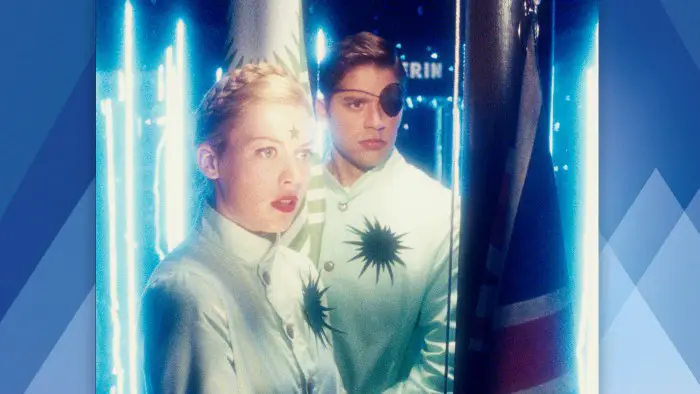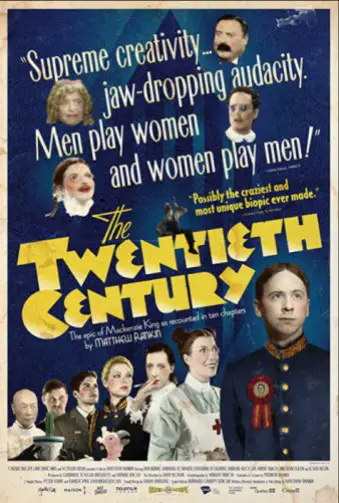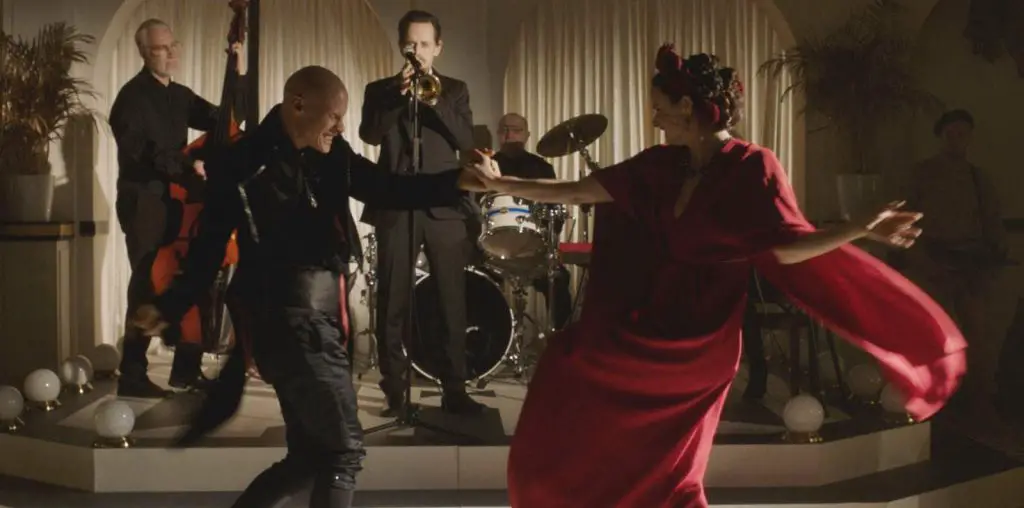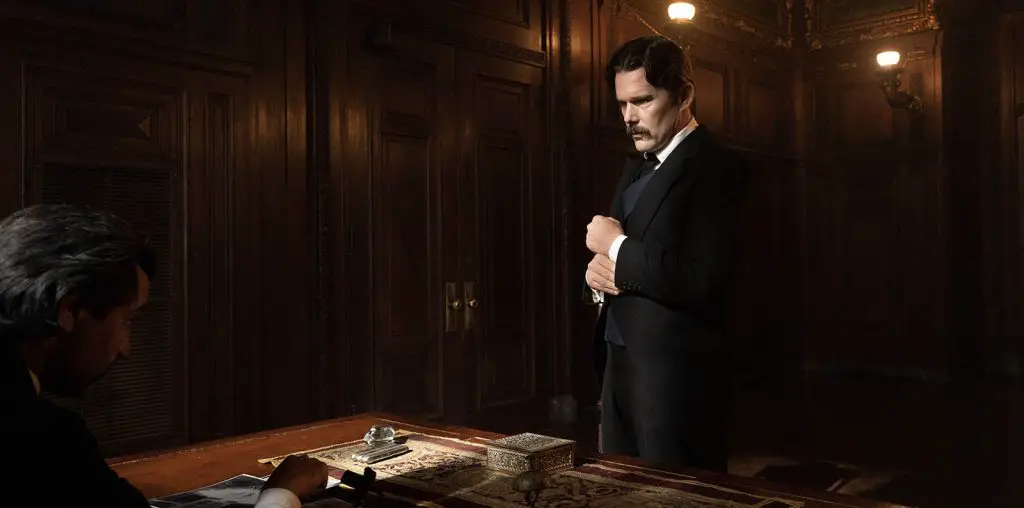
Before watching The Twentieth Century, I must confess that I didn’t know who Matthew Rankin was. Now I am very interested in seeing his past shorts because his feature-length debut is, in a word… bizarre. So much so, in fact, that I had to use italics just now. Set in Canada at the beginning of the twentieth century, the movie is a highly fictionalized biographical account of the life of Canadian Prime Minister William Lyon Mackenzie King, who had three non-consecutive terms as PM between 1921-1948. He wasn’t very well-liked nor charismatic in his personal life, according to the small bit of internet searching I’ve done, and the film exaggerates these qualities exponentially.

“…King’s mother had a prophetic dream that he would marry this girl…”
Dan Bierne plays King as a major sad-sack mama’s boy. He has a borderline Norman Bates relationship with his mother (Louis Negin). Negin’s role is not the only gender-bending performance in the movie. His father is illustrated to be ineffectual and a bit of a wet blanket because he always wears a yellow floral apron and is not allowed upstairs into Mother’s room, which sports about seven locks.
The Twentieth Century starts when King becomes prime minister, with the plot revolving around the hoops he has to jump through to get the coveted seat. We first meet King in a home for “defectives,” visiting Charlotte, a child with tuberculosis. She expects King to win the prime minister “competition” and help her out of her abject poverty. While talking to Charlotte, he hears a sound, which she explains to him is music. The person playing the music, more specifically, the harp, is Lady Ruby Elliott (Catherine St-Laurent). She’s the daughter of the Royal Governor, Lord Muto (Sean Cullen). King falls in love on the spot, and we soon find out that King’s mother had a prophetic dream that he would marry this girl and made a painting of her likeness playing the harp.

"…plays fast and loose with gender roles..."


